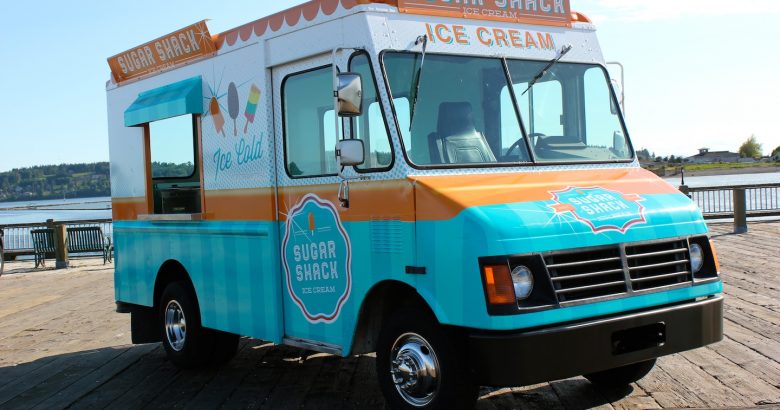
It all started with the ice cream cart. At the turn of the century, vendors in major cities sold ice cream out of ice-filled push carts to customers in ceramic dishes. After the customer finished the ice cream, the dish was then returned to the vendor, who wiped it down and loaded it up with a fresh scoop for a new customer. Customers with more money to spend could opt for an ice cream sandwich instead of a small scoop in a bowl.
At the 1904 World Fair in St. Louis, a convenient portable container premiered— the ice cream cone. The thin, crispy waffle had long been a contemporary dessert favorite, and rolling the waffle into a cone wasn’t any new idea. The novel concept was to scoop ice cream into the cone and use it as a portable container. According to legend, several vendors who sold concessions at the 1904 fair “introduced” waffle cones and since then have fought for recognition as to who was the true creator.
The rise of the public’s interest in ice cream was also timed with technological advances in refrigeration . In the early 1920s, large refrigerators existed but small ones were just being developed. This meant that street vendors could keep ice cream cold without using ice for the first time.
At the same time, the early 1920s also saw the start of Prohibition and the end of easy access to the wine, beer, or spirits. For many Americans, the comfort of delicious ice cream replaced the indulgence lost with banned spirits. The popularity of ice cream parlors soared during this era.
The first ice cream truck was credited to Harry Burt of Youngstown, Ohio, who was the creator of the Good Humor brand. Burt was already delivering ice cream from a motorized vehicle when he had the idea to place chocolate-covered ice cream bars on a wooden stick. His new Good Humor ice cream bar was easy and clean to eat, which gave him the idea to build a dedicated ice cream truck to sell them. The Good Humor name came from the belief that a person’s “humor,” or temperament, was related to the humor of the palate.
In the 1930s, ice cream sales dived due to the great depression but ice cream trucks such as Burt’s Good Humor brand where able to survive the due to the product’s low-cost. Many consumers couldn’t afford larger portions of ice cream, but they could afford a nickel for an ice cream treat. During this time, vendors began offering economical items such as twin popsicles that parents broke in half and shared with two children.
From the 1930s to the ’60s, thousands of Good Humor men patrolled the nation’s neighborhoods, becoming part of the communities they served. In 1965, Time reported, “To the young, he has become better known than the fire chief, more welcome than the mailman, more respected than the corner cop.”
Mister Softee was founded in Philadelphia in 1956 by two brothers who created a soft serve ice cream machine built specifically for a truck. Thus started an enterprise based on trucks that drove through neighborhoods selling its frozen confection products.
In the 1970s, Three Rivers in Pittsburgh, PA, a Chrysler, Dodge, Jeep, Ram dealer, explained that Good Humor exited the truck-based ice cream sales business to focus on more lucrative grocery store sales. However, today Mister Softee trucks are still on the streets, not to mention a host of competitors who sell a wide variety of frozen confections across the country. original treats as well as pre-packaged favorites to a new generation of kids listening to hear the familiar jingle on a hot summer day.
Whether they’re vintage or modern, ice cream trucks have a seductive allure that’s about more than just ice cream. They summon a particular kind of nostalgia—the sense of freedom that comes from long, carefree summer days and the thrill of having some change in your pocket and a long list of frozen treats from which to choose.
Image Source: wikipedia